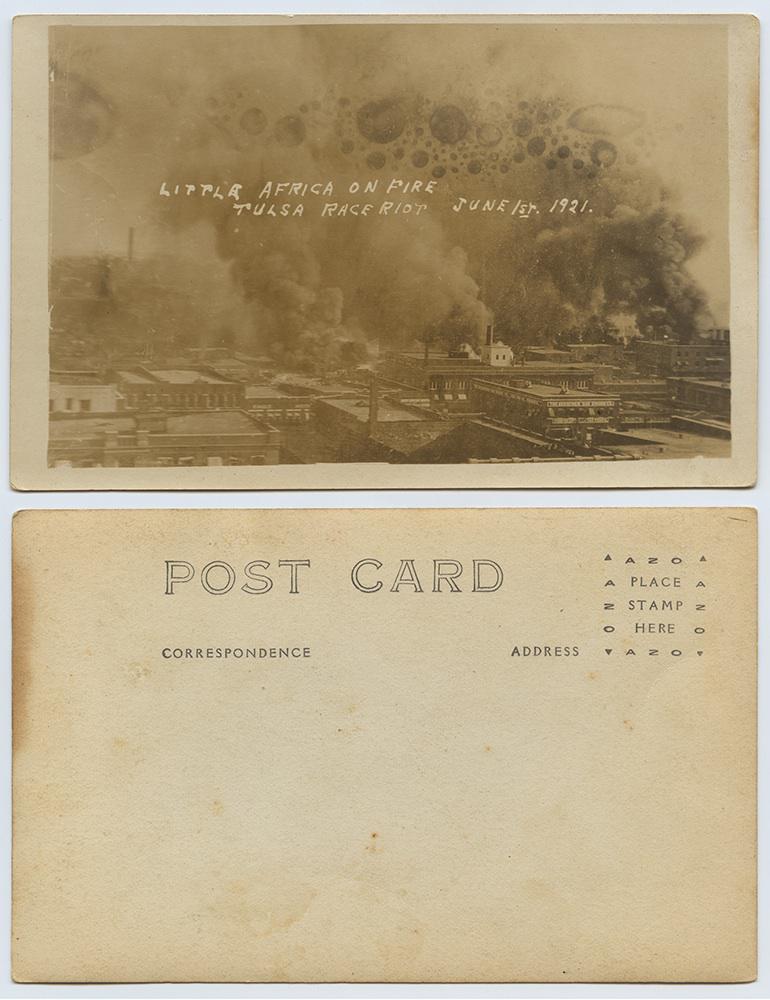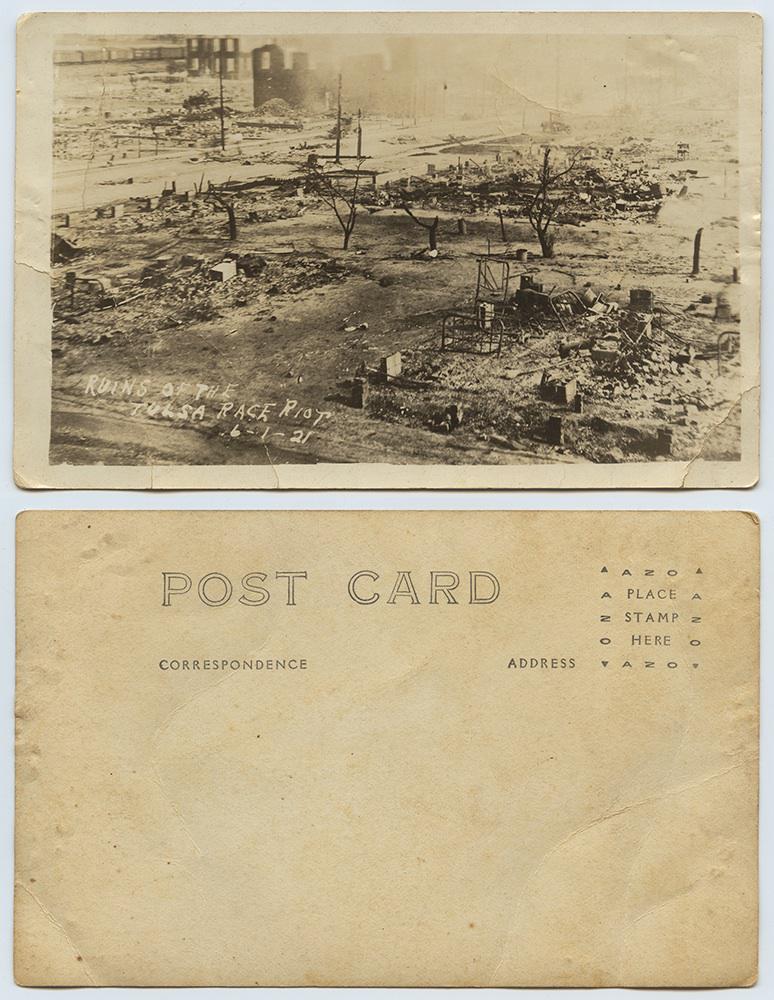In 1921, a white mob killed hundreds of black people & destroyed a prosperous black neighborhood in Tulsa, Oklahoma.
Survivors of the massacre and their descendants are still suffering the consequences of the #TulsaRaceMassacre.
Survivors of the massacre and their descendants are still suffering the consequences of the #TulsaRaceMassacre.
https://twitter.com/dreisenheath/status/1269934607027376128
On May 31, 1921, police in Tulsa arrested Dick Rowland, a young black man who lived in the Greenwood part of town, for an alleged assault on a white woman. Though the evidence against him was not strong, the Tulsa Tribune printed an editorial that afternoon calling for a lynching
A mob of white men converged on the county lock-up.
At the time, lynching of black people was common in the US—61 were reported in 1919; 61 in 1920; 57 in 1921. Violent white mobs terrorized black people, killing them & destroying their property, in cities throughout the US
At the time, lynching of black people was common in the US—61 were reported in 1919; 61 in 1920; 57 in 1921. Violent white mobs terrorized black people, killing them & destroying their property, in cities throughout the US
When news of the lynch-mob reached Greenwood, community members, including many World War I veterans, armed themselves and went to the courthouse to protect Rowland, but the sheriff told them to leave.
After the black men left, the crowd outside the courthouse grew to over two thousand, many of them armed. Tulsa police made no effort to de-escalate the situation or disperse the crowd.
Later that night, the men from Greenwood returned, offering to help the sheriff protect Rowland. A fight broke out when a white man tried to disarm one of the black veterans trying to protect Rowland and some shooting began, lasting through the night.
Early the next morning, a large mob of white men and boys invaded Greenwood, outnumbering its defenders by 20 to 1 or more. Witnesses said that people in airplanes flew over Greenwood dropping firebombs and shooting at people.
The attack lasted throughout the day. The mob drove through Greenwood, shooting and killing black people, looting and burning their homes and businesses.
Many black residents fought back, but they were greatly outnumbered and outgunned. Many fled, while thousands were taken prisoner.
At best, Tulsa Police took no action to prevent the massacre. Reports indicate that some police actively participated in the violence and looting.
The mob destroyed 35 square blocks of Greenwood, burning down over 1,200 homes, over 60 businesses, a school, a hospital, a public library & a dozen churches. Hundreds of homes were looted as well. Some estimates put the death toll at 300; others say much higher.
Tulsa City Commission issued a report 2 weeks later: “Let the blame for this negro uprising lie right where it belongs—on those armed negros & their followers who started this trouble & who instigated it & any persons who seek to put half the blame on the white people are wrong”
June 1, 1921: Oklahoma Governor James A. Robertson called in National Guard troops & declared martial law. The National Guard, as well as local law enforcement & other white citizens deputized by them, began disarming & arresting all black people & moving them to internment camps
This internment facilitated destruction and death, leaving black residents, outnumbered by more than 20 to 1, without the ability to defend their lives, home, and property.
During the attack, white men dragged dozens of black people in their nightclothes from their beds on the white side of town, in homes where they lived as domestic workers, screaming at and severely beating them before hauling them off to internment at various locations downtown.
Others liberally spread kerosene or gasoline inside Greenwood homes and businesses and then lit them on fire.
Once in the camps, black Tulsans were not able to leave without permission of white employers. When they did leave, they were required to wear green identification tags. By June 7, 7,500 tags had been issued.
The American Red Cross, which ran the internment camps, reported that thousands of black Tulsans, then homeless, were forced to spend months, or in some cases over a year and through the winter, in the camps, in tents. Many suffered disease and malnutrition in the camps.
None of the perpetrators of the #TulsaRaceMassacre - not Tulsa officials nor the hundreds of whites they deputized - were ever prosecuted or punished for their violent criminal acts.
The final 1921 grand jury report blamed Black people entirely, and in particular, “agitation among the Negros of social equality.”
When black Tulsans tried to rebuild, they faced enormous obstacles, including hostility from powerful sectors of the city.
A June 4 Tulsa Tribune editorial declared: “the old ‘N*****town’ must never be allowed in Tulsa again.”
(Obviously, they didn’t use any asterisks.)
A June 4 Tulsa Tribune editorial declared: “the old ‘N*****town’ must never be allowed in Tulsa again.”
(Obviously, they didn’t use any asterisks.)
The story continues here - through rebuilding, renaissance, redlining, destructive “renewal” projects: hrw.org/news/2020/05/2…
The effects of the Greenwood massacre & subsequent discrimination continue to be felt in the present day. Black neighborhoods remain underdeveloped & under resourced.
Mistrust of police is a legacy of the massacre. Aggressive policing in the present serves as a reminder and even an extension of the past.
Descendants of the survivors of the massacre, their relatives, and others, continue to press their claims for justice.
They have a very solid case for reparations.
They have a very solid case for reparations.
State and local authorities in Tulsa should promptly develop and carry out a comprehensive reparations plan, in close consultation with the local community, to address the harm caused by the #TulsaRaceMassacre and its lasting impact.
So, please, sign and share the petition: change.org/p/state-of-okl…
After the #TulsaRaceMassacre, white residents of Tulsa celebrated the obliteration of the Greenwood district - also known as "Black Wall Street" - with postcards like these...
slate.com/human-interest…

slate.com/human-interest…


• • •
Missing some Tweet in this thread? You can try to
force a refresh







